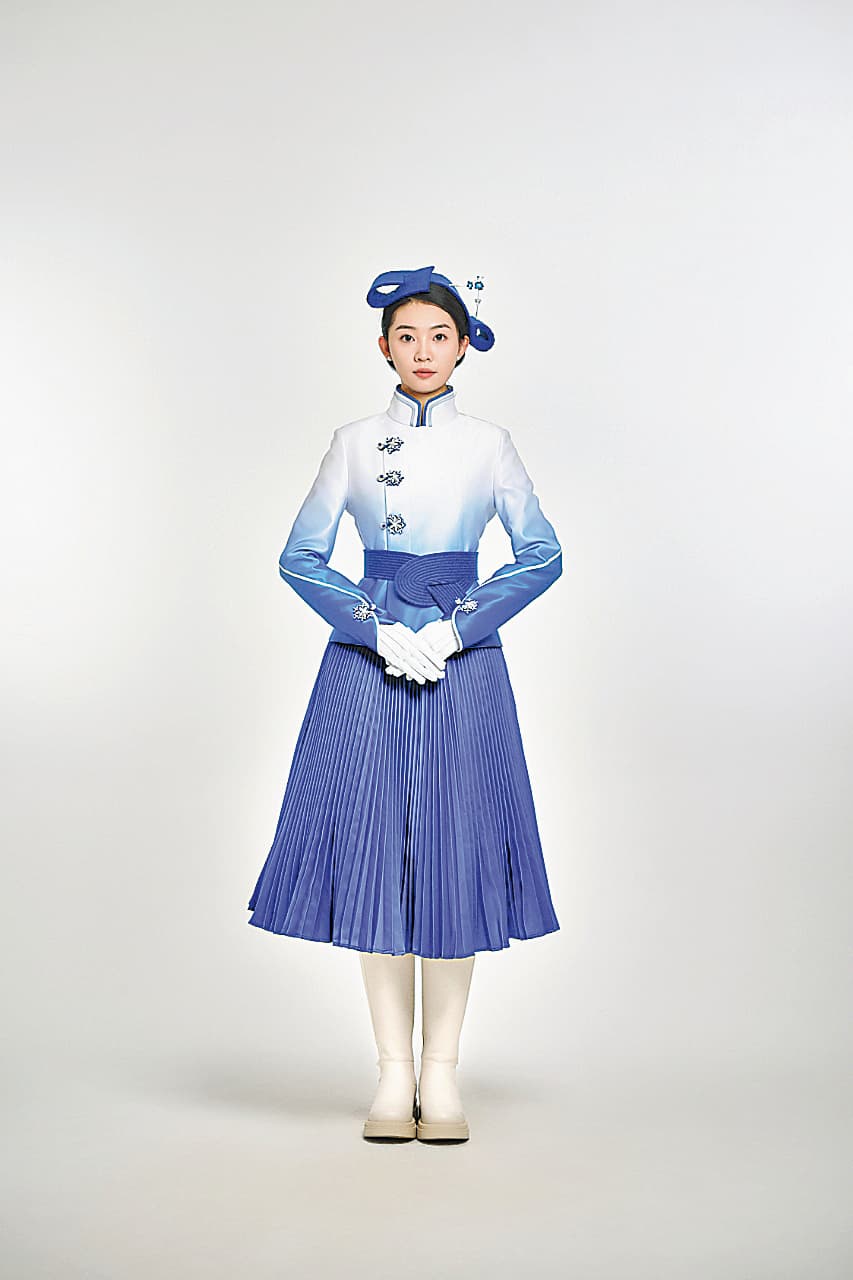
Ceremonial outfits at the Games are inspired by the ice and snow of Harbin. PROVIDED TO CHINA DAILY
Traditional Chinese cultural elements and aesthetics are subtly stitched into the ceremonial dresses and officials' attire at the 9th Asian Winter Games in Harbin, demonstrating the city's unique features while sending out best wishes for participants.
Donghua University in Shanghai was tasked with designing the outfits. Three teachers and eight students from the university's College of Fashion and Design have been immersed in the project since July.
Together with their production partners, they have managed to submit over 20 designs for approval and produce over 1,900 outfits for technical officials and Olympic Council of Asia (OCA) officials, 116 sets of ceremonial dresses and thousands of accessories, including silk scarfs and neckties.
"We have come up with about 40 designs in total, 20 of which were eventually confirmed. The Asian Winter Games are not only a sports gala, but also a big cultural gathering," said Ni Jun, one of the leaders of the design team and a professor at the College of Fashion and Design at Donghua University.
"We would like to showcase our traditional Chinese culture in the design of the outfits, which integrate Shanghai-style elements and craftsmanship."
Among all the designs, the blue ceremonial attire is particularly eye-catching.
Inspired by the ice and snow of Harbin, dubbed the Ice City, the dress embodies the exquisite combination of traditional Chinese culture and modern tailoring techniques.
According to the design team, the blue color symbolizes purity, nobility, trust and reliability, representing the sky, sea and glaciers, as well as enduring friendship and faith, which is in line with the spirit of sports.
Moreover, Ni explained that the wavy hair ornament takes inspiration from Chinese scrolls, and the hair pin inheriting the ancient Chinese design presents a unique dynamism when its wearer is walking.
The skirt swings smoothly with each step, and the upper part of the dress is a reimagined qipao, decorated with a Shanghai-style waistband featuring cloud patterns and handmade snowflake-shaped Chinese knot buttons.
In addition to the designs, the production of the garments was also a test for the team.
For instance, the officials' attire is made of top-level wool fabrics that provide good warmth, comfort and breathability.
However, such fabrics are extremely light and soft, which is challenging for shaping and production. Besides, the design also has to have the flexibility to accommodate the different body shapes and sizes of some 1,900 officials.
"We have been supported so much by the factories across the nation that cooperate with our university," Ni explained.
"They are equipped with advanced technologies and, as we demanded, have a sustainable and environmentally friendly production process.
"Producing one set of the officials' attire involves around 396 procedures. It would not be possible for us to complete the task and promptly respond to urgent adjustments without their support and expertise," Ni added.
Leading a team of 20 people, Ni is now busy serving the Asian Winter Games participants on-site in Harbin.
"It is going well so far, there have been a few demands for adjustments.
"I feel moved when I see our team united and get really wrapped up in our work to accomplish the task.
"It is a great honor for us as a group, and for Donghua University to be part of this sports gala," said Ni with a smile.
wangxin2@chinadaily.com.cn